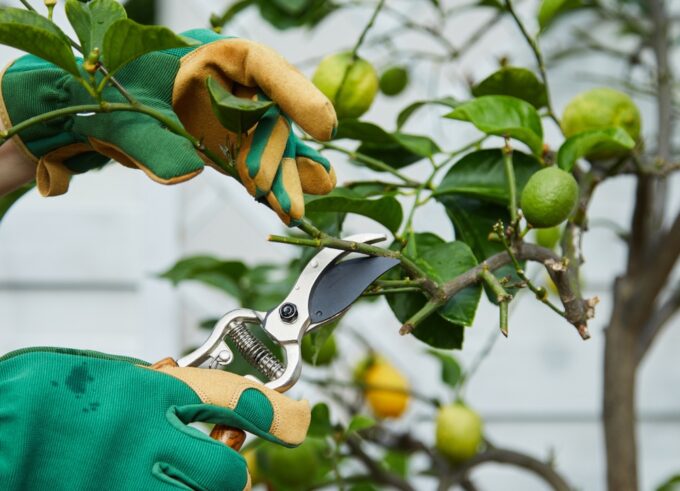Trees are one of the most vital organisms ever to have existed on earth. We learn from a young age that trees are precious resources, and we have to grow a lot of them to keep the atmosphere clean and the earth healthy. Trees host a wide variety of birds and animals and are indispensable to nature.
But at times you’d want to prune or cut trees without killing them. It happens because the branches become the cause of concern or you just need a little more space. It is very important to be aware of the way to cut a tree without killing it at times like these. Lots of fine skills are needed for this, and burketrees.com ensures that these requirements are met.
Pruning and trimming trees are totally based on their location. If it’s too close to the house, branches can damage windows and the roof; if they’re near roads, the branches can interfere with driving and vision.
Hence, in the wake of the emergency to preserve the green cover, people tend to carefully prune and trim the parts that cause trouble but retain the tree. We have already played a part in harming nature with our lifestyles, so an option not to kill a tree is actually one of the best things we can do for nature.
Let’s get to how first to preserve the tree’s health and then how much can be cut without killing it.
1. Maintain a proper timetable for cutting.

Source: vintagetreecare.com
Trees should generally be trimmed every three to five years. A tree anyway sheds unwanted parts, but it takes a little longer for this to occur naturally. Pruning hastens the process and can better the tree’s health. Younger trees need trimming every two to three years. Arborists often are consulted to find out how much can be pruned from a tree and for how long.
2. Preserve the foliage.
The general advice from arborists is to never cut more than 15 to 20% of a tree’s foliage at a time, as this sets back a tree a lot by energy synthesis and can be detrimental to it. 5- 10% is ideal as cutting more than results in the tree suffering a lack of food production, nutrient supply, and structural strength.
3. Inspect the cuts with every pruning session.

Source: garden.eco
You’ll know that the tree is still healthy despite all the cutting when you do not have to seal its limbs. Sealing limbs is when the tree cannot heal itself fast, and you have to provide a mechanical barrier not to allow bacteria or fungi inside. A properly pruned tree can compartmentalize its wounds with cell layers and heal.
4. Prune at the correct timings.
For certain trees and shrubs, cutting should be done in the winter when the plants are fully dormant. This helps the tree or plant not to stress and get unhealthy or infected. Also, pathogens would be at minimum activity during the winters, reducing the chances of disease.
However, many spring-blooming trees and shrubs are exceptions to this rule. The best time to prune these is immediately after they bloom, as early as possible. In this case, the plant cells are actively dividing, and they show rapid healing. So, pruning them as early as you can is ideal. This method varies between different plant species.
Majorly, pruning in the summer heat is discouraged and even in the fall, because the plant is becoming dormant. Only heavily damaged and diseased wood can be removed at any time of the year.
5. Maintain a healthy percentage of branches on the tree.

Source: treeservicepickering.com
Prune minimally. More than 25% of a tree’s branches should never be pruned, and it is always recommended that you maintain 2/3rd of a tree’s cover. Some people feel that pruning all the branches and leaving just the trunk would ensure the tree’s survival. That is not true. A tree is, after all, a living organism, and the branches are its active parts bearing leaves that keep the tree nourished. Pruning should be done, keeping that in mind.
6. Avoid root pruning.
Some trees grow really tall and can cause inconvenience depending on where they’re located. So, many people go for root pruning, and they cut it such that it stays at an optimum rootball size. This is done widely but is always not recommended. This permanently damages the tree and results in stunted growth. Roots are essential for a tree’s health, and the size of the root is proportional to the plant’s water requirements. Trimming it will have direct consequences.
7. Make sure the dead parts are also removed.
Normally when you prune the healthy parts, it is also recommended that you cut the dead branches and stumps and even the girdling roots so that more nutrition can be provided to the healthier parts. These parts tend to get diseased more quickly than the others, and removing them keeps the tree in good health.
8. Provide proper maintenance after cutting.

Source: rapidcitytreepros.com
No matter how little pruning you do, it is a loss for the tree. So to help it recover, the maintenance of the tree should be done perfectly. Lots of watering to prevent water stress should be done. Make sure the tree gets ample sunshine and ensure adequate and proper nutrition. Water is very important for a tree’s structural integrity; hence watering regularly is recommended after pruning.
9. Keep an eye on the tree after pruning it.
When a tree branch is cut off, the tree develops a callus tissue where the cut is made in order to cover the wounds to keep out the harmful organisms. If the pruning is done properly, only minor scars would be left once the tree heals! You have to check it regularly for signs of infection in this area in order to ensure that the tree survives.
Conclusion
So these are the essential tips to remember when a tree is getting cut at the same time you want to make sure that it does not die. Generally, there are basic rules like cutting branches only until 2 inches above where the limbs grow, but there are also finer rules like the above that have to be followed to make sure the tree retains its health. Trees are extremely important to us, and taking care of them is one of the most necessary steps we have to take if we want a happy home and happy earth.







